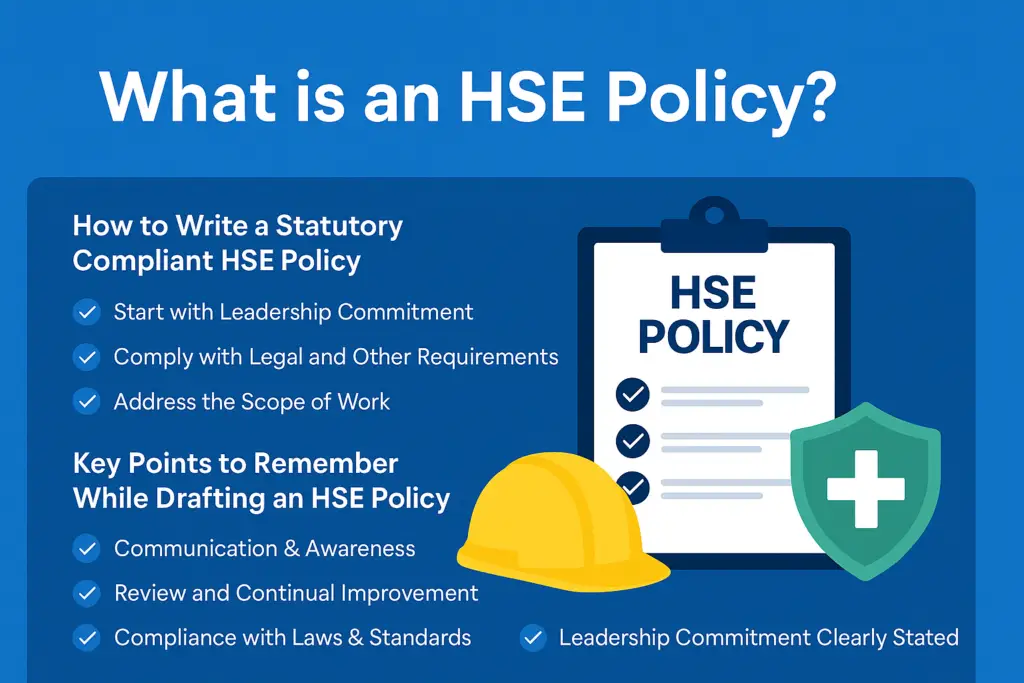
An HSE Policy (Health, Safety & Environment Policy) is a formal declaration of an organization’s commitment to managing health, ensuring safety, and protecting the environment in its operations. It sets the tone for workplace culture, compliance, and continuous improvement in HSE performance.
🔍 What is an HSE Policy?
An HSE Policy:
Outlines the organization’s intent and commitment towards safeguarding the health and safety of employees, contractors, visitors, and the public.
Ensures the protection of the environment from adverse impacts due to business operations.
Aligns with statutory requirements, international standards (e.g., ISO 45001, ISO 14001), and stakeholder expectations.
✅ How to Write a Statutory Compliant HSE Policy
To ensure legal and standard-compliant drafting, follow these principles:
1. Start with Leadership Commitment
Senior management must express dedication to protecting life and environment.
Demonstrate accountability and active leadership.
2. Comply with Legal and Other Requirements
Mention compliance with applicable laws, regulations, and standards such as:
The Factories Act, 1948
The Environment Protection Act, 1986
ISO 45001 (Occupational Health & Safety Management)
ISO 14001 (Environmental Management)
3. Address the Scope of Work
Specify the nature of activities (e.g., construction, real estate, manufacturing) and how HSE risks will be managed.
4. Define Objectives & Goals
Commitment to:
Zero harm
Pollution prevention
Sustainable resource usage
Continuous improvement in HSE performance
5. Stakeholder Inclusion
Highlight the policy’s applicability to employees, subcontractors, suppliers, clients, visitors, etc.
6. Communication & Awareness
Ensure the policy is:
Communicated to all personnel
Displayed prominently at workplaces
Reviewed regularly for relevance
7. Review and Continual Improvement
Include a clause on periodic review and improvements based on incidents, audits, and changes in regulations.
📌 Key Points to Remember While Drafting an HSE Policy
| ✅ Checklist Item | 📝 Remarks |
|---|---|
| Leadership commitment clearly stated | Must be signed by Top Management |
| Compliance with laws and standards mentioned | Include ISO 45001, ISO 14001, Factories Act, BOCW Act |
| Scope of operations covered | Industry-specific risks and activities |
| Objectives and targets are defined | Should be SMART (Specific, Measurable, Achievable, Relevant, Time-bound) |
| Roles and responsibilities referenced | Define accountability |
| Commitment to training and awareness | Include continuous training and competence building |
| Communication and access ensured | Internal & external stakeholders |
| Reviewed periodically | Typically every year or post-major change/event |
| Public availability (optional for ISO) | Should be available upon request or posted online |
| Environmental responsibility clearly stated | Prevention of pollution, waste minimization |
